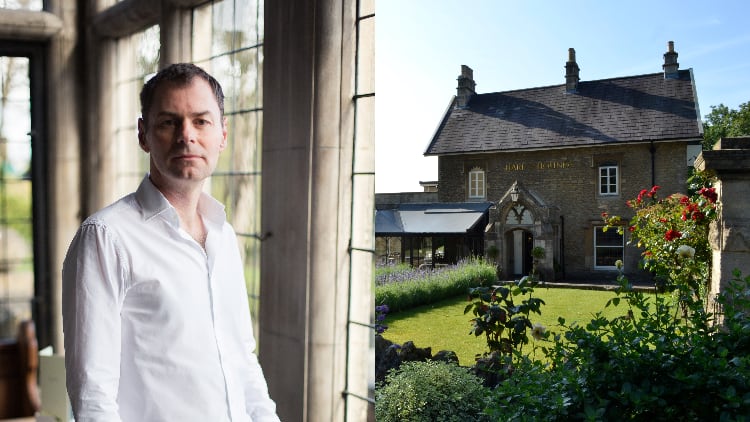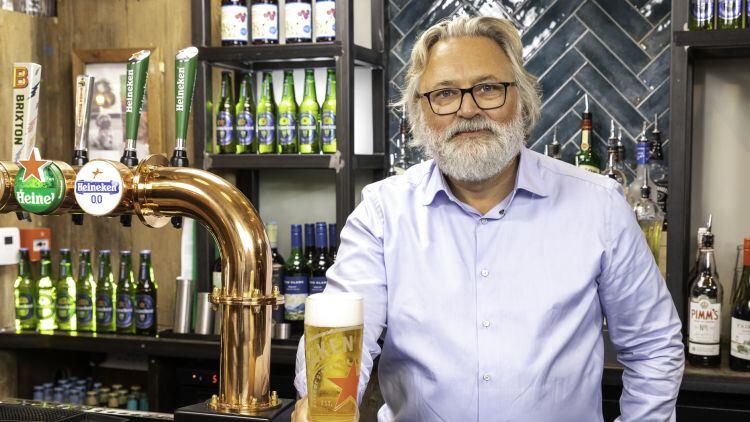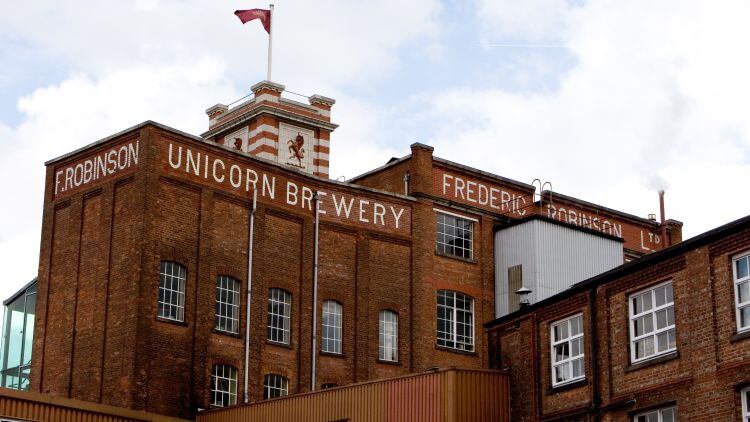From the Chancellor’s comments, it seems unlikely that this will materialise - for the Treasury, business rates are an extremely efficient tax.
However, the pub industry has it entirely in its power to change the amount of business rates it pays without any reform of the system. The problem for pubs, lies not with the concept of business rates, but with how pub valuations are determined by the Valuation Office Agency (VOA) – and the resulting rates bills they generate.
The VOA’s current valuation approach for pubs is flawed, producing inaccurate and routinely excessive valuations that are contrary to their statutory duty for accuracy. As a result, many pub operators are paying tens of thousands of pounds more than they should in rates.
While the VOA have a legal duty to value pubs, the method they use is not prescribed in law – the approach they currently use is of their own making and choosing.
The VOA’s approach to valuing pubs is published in their ‘Valuation of Public House, Approved Guide’. They claim that their approach, its validity and all associated arguments contained in the guide have been approved and endorsed by pub industry trade associations. However, while the logos of most of the main trade associations appear on the cover of the guide, it is unclear to what degree their endorsements extend.
The ‘Approved Guide’ outlines a data modelling approach which the VOA claim allows them to accurately calculate valuations by converting estimates of sales (FMT) into valuations. It’s a shortcut approach – shortcuts are legitimate, but only if they are accurate.
But the VOA’s approach isn’t accurate; it produces random, arbitrary valuations that are impossible to justify. There isn’t the space to present all the evidence here – but it is incontrovertible. The VOA are routinely inflicting incorrect, excessive and punishing valuations on the pub sector.
The VOA’s model relies on a simplistic conversion of sales to profits to values which assumes all pubs and their operating model can be accurately placed and understood on a spreadsheet. Pubs come in all shapes and sizes; we are a wonderfully diverse, messy industry with all sorts of operating models, each with their own local challenges. To presume you can accurately apply a percentage to an individual pub’s turnover and translate that accurately into a resulting profit output is nonsense.
RICS – the most respected valuation body, publish their own pub valuation guide which outlines the approach they recommend for pub valuations. Nowhere does it mention the use of FMT.
Sales are an unreliable indicator of profit – we had a pub that we ran for ten years but could never turn a profit there. We grew its turnover by 64% to £680,000pa but still couldn’t make it stack up. Yet the VOA’s simplistic view of pubs is that all turnover uniformly translates into a predictable profit margin – and they rewarded me with a 137% increase in my rateable value accordingly.
Bearing in mind the role the ‘Approved Guide’ plays in pub valuations and rates we pay, it is crucial that we know that its methods have been properly verified. So, some key questions: how has this model been developed? What data have the VOA used? Who has verified the data, methodology and accuracy of the outputs produced?
Current problem
I have spoken with senior figures in trade associations who have told us that the VOA only present them with charts and figures showing the outputs of the model which they’ve produced themselves as evidence of its accuracy. It seems that the VOA are simply marking their own homework.
We don’t need to convince the VOA that their valuation method is flawed; issues regarding the legitimacy of the VOA’s valuations are ruled on by the Valuation Tribunal Service and/or the courts. Unfortunately, they are told that the guide and its methods has been agreed to by trade industry representatives and they are encouraged to only consider arguments relating to valuation appeals based on its contents.
That’s the problem we currently have. The claims of endorsements from the trade associations are the only degree of legitimacy that the ‘Approved Guide’ currently enjoys.
But it seems that the VOA are exaggerating and misreporting the extent of the cooperation and endorsement of their ‘Approved Guide’ by trade associations. They would have you believe that everything that appears in it - its methodology, accuracy and all arguments – have all have been explicitly approved and endorsed by the trade associations which feature on its cover. But that’s not what I hear when speaking to the trade associations who tell me their input into the guide is far more advisory and a long way from the blanket endorsement the VOA would have you believe exists.
The VOA’s ‘Approved Guide’ is not only responsible for creating inaccurate valuations in the first place, it also creates major barriers should you try to challenge or appeal your valuations.
Present evidence that same sized pubs are valued much lower than yours and the VOA dismiss this, saying: “in accordance with the Approved Guide attempts to compare rateable values based on size of property is inappropriate”. They go on to say: “Regard must be had to their trading potential.”
How else would you assess the trading potential of a pub if not primarily on its size and location? This is what I’m trying to illustrate by showing comparable pubs, but the VOA hide behind the guide saying that “the guide and its contents have been agreed with industry representatives.”
They also dismiss arguments about increases in valuations from one rating list to another as ‘inappropriate’ . As the gov.uk website says: “At revaluation, the Valuation Office Agency (VOA) adjusts the rateable value of business properties to reflect changes in the property market.”
I asked them to justify a 152% increase in the rateable value for one of my pubs, a pub which has undergone no changes to its size and shape during that time, but they refused, saying “As stated in the Approved Guide comparisons between rating lists are not appropriate.”
If a property has remained unchanged from one list to another and the VOA’s valuation method is accurate, then huge differences between one list and another are highly relevant and it is wholly appropriate to raise questions about them.
Business valuation
The VOA are writing their own rules about what evidence can be presented in appeals and undermining operators’ ability to undertake a fair challenge.
It seems clear that the VOA is failing in its statutory duty to accurately value (pub) properties and are instead valuing the businesses which operate from within them.
Despite the fact that today the lines between pubs and restaurants have blurred to such an extent that in many cases the distinction is meaningless, restaurants are valued differently to pubs – using the far more transparent square footage. The VOA claim that both valuation techniques are valid and produce accurate results. If this is true then you should see similar valuations as an output, regardless of which valuation method you use, when you compare the results of valuations carried out on similar properties.
But you don’t. Instead you see huge differences, with pubs routinely paying many more than comparable sized restaurants. The only explanation is that one of the valuation methods used is producing flawed results. And I know which my money is on.
One of my favourite examples of this in action is the site in Bath that is now occupied by Wagamama which was previously a Slug and Lettuce. It appeared on the 2010 rating list as a ‘pub’ and was given a rateable value of £153,000. Seven years later, when you might have expected to see property values increase (especially in central Bath), it was reclassified as a restaurant and revalued as such.
And the result? Its rateable value fell by 39% to £92,000. It is exactly the same building, but the pub pays through the nose to operate out of it. To be clear, my point isn’t that restaurants are undervalued, it’s that pubs are routinely over valued.
No wonder it’s so hard making money from pubs.
I can’t praise highly enough our trade associations for their tireless efforts lobbying and campaigning for the industry since the pandemic hit. The support we’ve received from them has been nothing short of outstanding and I’m extremely reluctant to pass any comment that could be construed as critical. However, I can’t help feeling that on the issue of how the VOA values pubs, we are right to ask for a little more from them.
I’m calling on all trade associations that currently allow their logo to appear on the VOA’s Approved Guide to think again and withdraw, or at the very least, qualify, their apparent endorsement of it. We need clarity on what has, and has not been ‘approved’ in the VOA’s ‘Approved Guide’. If, as I suspect, the accuracy of the VOAs data modelling has not been verified by a qualified and independent body, then we need to know. We need our trade associations to engage with the VOA far more robustly on the question of how pubs are valued and put to them the overwhelming evidence of the failings of their current approach.
Pub operators have complained for years about the disproportionate amount of business rates they pay but have been unable to bring about any change. This is due to the misapprehension that the method for pub valuations is fixed and unassailable. But it’s not, and it’s high time it changed.




